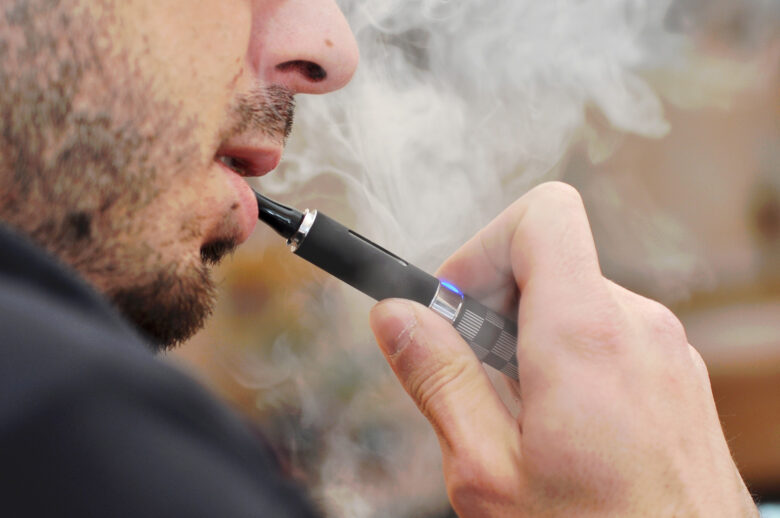Having a smoke-free life can drastically improve your overall health and lifestyle. Whether trying to quit smoking cigarettes or avoiding the temptation altogether, the path to achieving good respiratory and cardiovascular health is undoubtedly attainable. Not only does quitting have tremendous benefits for your body, but it can also leave behind nasty habits like stained teeth and clothing that smells of smoke.
It’s time to reconnect with yourself and adopt healthier habits today. In this article, we’ll look at some practical ways to stay away from cigarettes while exploring alternatives that will help build stronger relationships with loved ones without the risk of secondhand exposure. Ready? Take a deep breath – let’s start clearing the air around us.
The Hazards of Secondhand Smoke and How to Avoid It
Secondhand smoke is a significant health hazard that affects millions of people worldwide. It is a mixture of smoke from a burning cigarette or other tobacco products and the smoke exhaled by a smoker. The dangers of secondhand smoke are well documented in research, and it has been linked to severe health problems like cancer, heart disease, and respiratory illnesses. Children and pregnant women are particularly vulnerable to the harmful effects of secondhand smoke.
To avoid exposure to secondhand smoke, it is recommended that individuals avoid smoking and spend time with smokers in enclosed spaces. Public health policies like smoke-free laws and regulations can also help to reduce exposure to secondhand smoke. We all must protect ourselves and our loved ones from the hazards of secondhand smoke. NEAFS is an excellent option for quitting smoking and reducing secondhand smoke exposure.
Tips for Quitting Smoking and Staying Smoke-Free
Quitting smoking can be a challenging undertaking, but the benefits are clear. Not only can quitting smoking improve your health, it can also save you money and improve your quality of life. Staying smoke-free can also be challenging, but you can maintain your new smoke-free lifestyle by developing healthy habits and finding support.
Some tips for successfully quitting smoking and staying smoke-free include setting a quit date, finding alternative ways to cope with stress and anxiety, avoiding triggers that may tempt you to smoke, and seeking support from friends, family, or professionals. Committing to your health and well-being and staying focused on your goals, you can successfully quit smoking and lead a healthier, happier life.
Identifying Triggers That Lead to Smoking and Strategies to Combat Them
One of the critical factors in successfully quitting smoking is identifying triggers that may lead to cigarette cravings. These triggers can include stress, social situations, or even certain emotions. By identifying these triggers and developing strategies to combat them, you can better prepare for moments when the temptation to smoke arises.
Some possible strategies for combating smoking triggers include finding alternative ways to cope with stress, such as exercise or meditation, avoiding social situations where smoking may be present, and finding healthier ways to express emotions, like journaling or talking with a trusted friend. By understanding your triggers and planning to address them, you can overcome the urge to smoke and maintain a smoke-free life.
Finding Healthy Alternatives to Cigarettes When Craving Nicotine
When quitting smoking, finding healthy alternatives to cigarettes is essential when experiencing cravings for nicotine. It can help reduce the chances of relapsing and maintaining a smoke-free life. Some options for healthy alternatives to cigarettes include nicotine gum or patches, herbal cigarettes, and vaping with non-nicotine e-cigarettes.
It is essential to note that while these alternatives may help with nicotine cravings, they are not without their potential risks, and it is vital to consult with a healthcare professional before trying any new methods. Finding healthy distractions such as exercise or engaging in a hobby can also help reduce cravings and keep you on track for a smoke-free life.
Making Your Home a Smoke-Free Zone Through Innovative Solutions
Another critical aspect of maintaining a smoke-free life is to make your home a smoke-free zone. It not only protects you and your loved ones from secondhand smoke, but it can also help reduce the temptation to smoke within your living space. One innovative solution for creating a smoke-free home is installing air purifiers with advanced filtration systems that target harmful particles and toxins in the air.
Other helpful strategies for making your home a smoke-free zone include setting designated outdoor smoking areas, decluttering and deep cleaning to remove lingering cigarette smells, and finding healthy ways to relax and unwind, such as taking a hot bath or listening to calming music. By creating a clean and peaceful environment, you can set yourself up for success in maintaining a smoke-free home.
Protecting Yourself From Secondhand Smoke in Public Spaces
In addition to making your home a smoke-free zone, taking precautions in public spaces where you may be exposed to secondhand smoke is vital. It includes places like restaurants, bars, and outdoor events where smoking may be allowed. One way to protect yourself from secondhand smoke in these spaces is by choosing smoke-free establishments or areas.
If smoke-free options are unavailable, you can also minimize your exposure by sitting in a well-ventilated area, avoiding areas with smokers, and covering your nose and mouth if necessary. Additionally, advocating for smoke-free policies in public spaces can help protect the health of others who may be sensitive to secondhand smoke.
Article by Born Realist






